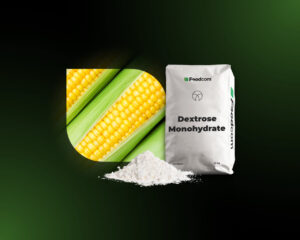- Dextrose prices increased significantly in October. They are not expected to fall until early next year.
- The reason for the crisis is the reduced productivity of production facilities, transport disruptions caused by the US port workers’ strikes and other economic and geopolitical factors.
- Dextrose demand growth increases in the last quarter of the year, which carries the risk of low dextrose availability and further price increases.
What caused the global dextrose crisis?
Dextrose prices skyrocketed in October, causing a shock to the global chemical industry. Contributing to the price rise was the closure of two major production facilities located in Asia, which are now operating at significantly reduced capacity due to changes being made to upgrade infrastructure and bring procedures in line with current regulations.
The dextrose crisis has also been influenced by the historic labour dispute at major US ports, which has disrupted shipments of various products. In addition, demand for dextrose traditionally increases in the fourth quarter of the year, driven by increased production of winter cleaning products and personal care items containing dextrose. Rising energy costs and stringent environmental regulations affecting local production capacity have further reduced the availability of dextrose in Europe.
What are the consequences of dextrose price increases?
Dextrose is a simple sugar mainly derived from corn starch, also known as glucose. It is used as a sweetener and stabiliser. It is not only an ingredient in confectionery, isotonic drinks and sports formulas, but also in medicines and intravenous solutions used in medicine. The soaring cost of dextrose has meant that manufacturers operating in these industries have had to struggle to secure supplies and maintain production schedules.
European markets are particularly vulnerable to dextrose supply shortages. It is predicted that 60% of dextrose imports are disrupted. The spillover effects of a disrupted dextrose supply chain will be particularly acute as producers approach peak seasonal production periods and dextrose prices remain high until the end of the quarter. Early next year, as alternative supply chains are established and production facilities return to full capacity, prices may stabilise.
![Dextrose market faces crisis and price rise [World News] Dextrose market faces crisis and price rise [World News]](https://foodcom.pl/wp-content/uploads/2023/09/Foodcom_World_News_Global_Stock-1520x760.jpg)


![Latest reports on reducing methane emissions [World News] Latest reports on reducing methane emissions [World News]](https://foodcom.pl/wp-content/uploads/2023/09/Foodcom_World_News_Dairy-600x300.jpg)
![Global sodium benzoate market facing price pressure [World News] Global sodium benzoate market facing price pressure [World News]](https://foodcom.pl/wp-content/uploads/2023/09/Foodcom_World_News_CAT_3-600x300.jpg)
![Potash Development Association reminds how to successfully establish winter crops [World News] Potash Development Association reminds how to successfully establish winter crops [World News]](https://foodcom.pl/wp-content/uploads/2023/09/Foodcom_World_News_Plant-Based-600x300.jpg)

